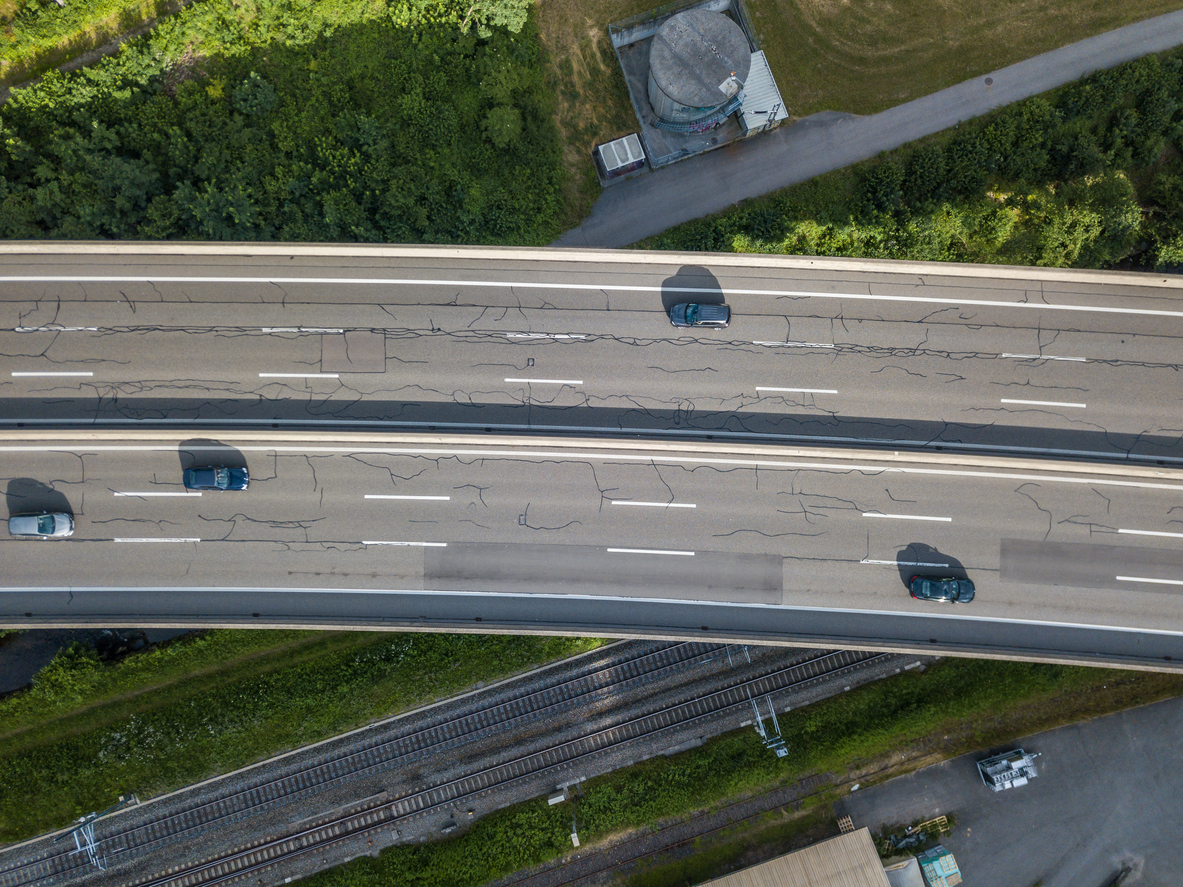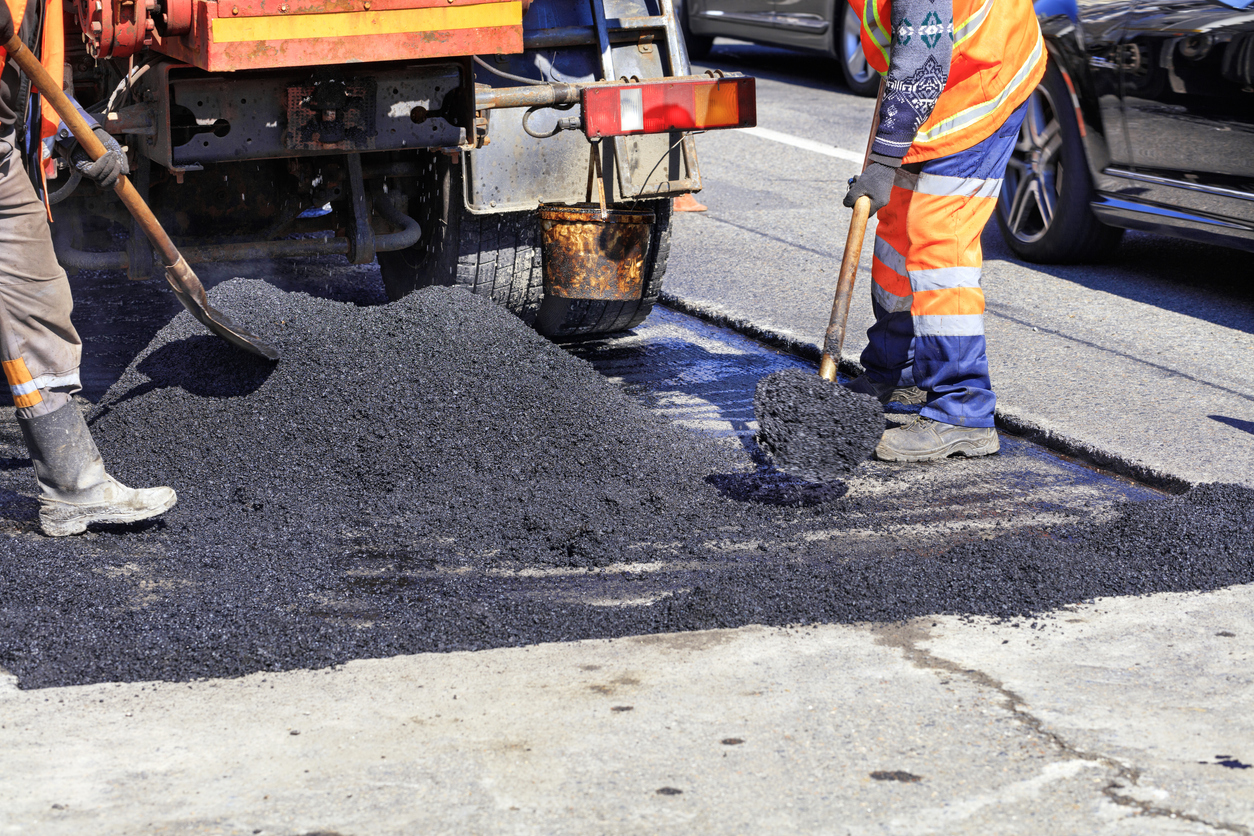Across the country, pothole lifecycle management is becoming a growing concern as roadways are constantly under pressure. Traffic, weather, and age can do significant damage over time. Potholes are visible signs of deeper pavement damage.
For transportation agencies, the challenge goes far beyond repairing potholes. Instead, it’s about understanding how they form, tracking their progression, and intervening before small cracks evolve into costly hazards.
Examining the entire life cycle of a pothole requires more than just understanding how your pavement behaves. It allows agencies to adopt strategies that reduce emergency repairs and improve safety. These measures also extend infrastructure lifespan while lowering long-term maintenance costs.
Stage One: Microcracks
The life of a pothole begins subtly. Asphalt and concrete surfaces develop tiny hairline cracks long before they become noticeable depressions in the pavement. These microcracks form for four reasons:
- Repeated stress from vehicles driving on the surface.
- Thermal expansion and contraction due to changing temperatures.
- Water infiltration in heavy rains and exposure over time.
- Aging of the materials.
Environmental factors, like extreme heat or cold, can accelerate this early stage of deterioration. Once water penetrates these small fractures, the pavement structure below the surface begins to weaken. Water can erode the base or subbase, especially in areas where drainage is poor.
Microcracks are frequently invisible to the naked eye. That means traditional and infrequent inspections can miss the earliest warning signs of pavement holes. And yet, identifying and addressing microcracks early can prevent more significant damage, saving substantial maintenance costs over time.

Stage Two: Crack Propagation
If left untreated, microcracks grow and connect, forming larger crack patterns. One common pattern in roadways is alligator cracking, named for its resemblance to an alligator’s scales. These interconnected cracks indicate that the pavement has lost structural integrity. Each vehicle that passes over the weakened area compounds the problem, gradually widening cracks and creating voids beneath the surface.
At this stage, surface deterioration accelerates. Pavement may begin to spall, meaning chunks of asphalt break away. Signs of surface wear, such as slight depressions or unevenness, become visible.
Neglecting preventive action makes these areas prime candidates for full pavement hole formation. By monitoring crack propagation patterns, agencies can prioritize interventions before fixing becomes more complicated and expensive.
Stage Three: Pothole Formation
A pothole forms when a section of pavement can no longer support the load of passing vehicles. The surface collapses into the weakened layers beneath, leaving a depression in the roadway. It can vary in size from a few inches to several feet across and several inches deep.
The emergence of a pothole marks a watershed moment in the pothole lifecycle management process. At this stage, the risk to public safety rises significantly. Drivers and cyclists can experience potentially severe accidents if they unexpectedly encounter a surface defect.
Meanwhile, vehicles may suffer tire, wheel, or suspension damage; in fact, according to the U.S. Department of Transportation, American drivers report more than $25 billion in vehicle damage from potholes every year.
According to the Federal Highway Administration, unplanned repairs from potholes account for a significant portion of local maintenance expenditures. Early intervention during the crack propagation stage could reduce these costs substantially.

Stage Four: Pothole Expansion
Once a pothole exists, it rarely remains static. Repeated traffic stress and environmental conditions cause pavement defects to grow larger over time. Water continues to infiltrate the base layers, undermining the pavement adjacent to it. Meanwhile, freeze-thaw cycles in colder climates exacerbate the process, causing it to widen, deepen, or even split into multiple depressions.
Without timely repair, the surrounding pavement becomes weakened as well. The scope and cost of necessary maintenance increase significantly. As a result, agencies relying solely on reactive repairs can see these recur or expand quickly, creating a cycle of recurring expenses and potential safety hazards.
Building a Predictive Maintenance and Intervention Schedule
To prevent potholes from forming or advancing through their lifecycle, agencies must move beyond a reactive strategy that starts only after they have already formed. Predictive maintenance offers a more proactive alternative.
More specifically, predictive maintenance uses data to forecast where pavement defects are likely to develop, allowing agencies to intervene early. Techniques such as computer vision analysis of imagery, historical road performance data, and environmental modeling can all identify areas at risk before the damage becomes more severe.
For example, hairline cracks detected through continuous monitoring can be sealed before they allow water penetration. Sections showing early signs of alligator cracking can be treated with surface overlays or patching to prevent collapse. By addressing defects in these early stages, agencies can maintain roadway safety while significantly reducing costs associated with emergency repairs and extensive pavement replacement.

An AI-Driven Approach to Pothole Lifecycle Management
AI-powered predictive maintenance tools enable transportation agencies to manage potholes throughout their entire lifecycle, from the initial microcrack to the fully formed depression. By continuously analyzing roadway imagery and condition data, these systems can detect subtle signs of pavement distress long before they become major problems.
Algorithms monitor crack propagation, identify emerging weaknesses, and predict where they are most likely to form. This predictive capability, in turn, enables agencies to prioritize interventions more efficiently. Maintenance crews can focus on high-risk areas, reducing unnecessary inspections and lowering labor and material costs.
Early detection also supports preventative treatments such as crack sealing, micro-patching, or surface overlays, which extend the pavement’s usable life while reducing the need for emergency repairs.
Over time, continuous monitoring combined with AI analysis creates a comprehensive and data-driven record of road conditions. Agencies can now use this insight to evaluate the effectiveness of their maintenance strategies, optimize their budget, and plan preventive cycles. Roads can be managed proactively, with interventions timed for maximum impact, improved safety, and reduced costs.
Looking Ahead: Smarter Roads Through Predictive Data
Understanding the lifecycle of a pothole, from microcrack to full collapse, offers transportation agencies a path toward more efficient and cost-effective roadway management. Agencies can leverage predictive insights to shift from reacting to damage to addressing vulnerabilities before they escalate.
Modern infrastructure intelligence platforms enable this shift by continuously analyzing roadway imagery, monitoring crack propagation, and forecasting likely points of failure. At their best, these systems integrate with asset management workflows to provide actionable information that guides maintenance schedules and long-term strategies. Platforms such as Blyncsy demonstrate the potential of these tools. Agencies can use high-frequency imagery and AI-driven analysis to apply predictive maintenance. This method improves how roads are monitored and maintained. Interventions can be delivered more quickly, and resources can be allocated more efficiently. Predictive maintenance, based on continuous monitoring, is the next step toward sustainable and proactive infrastructure management.






